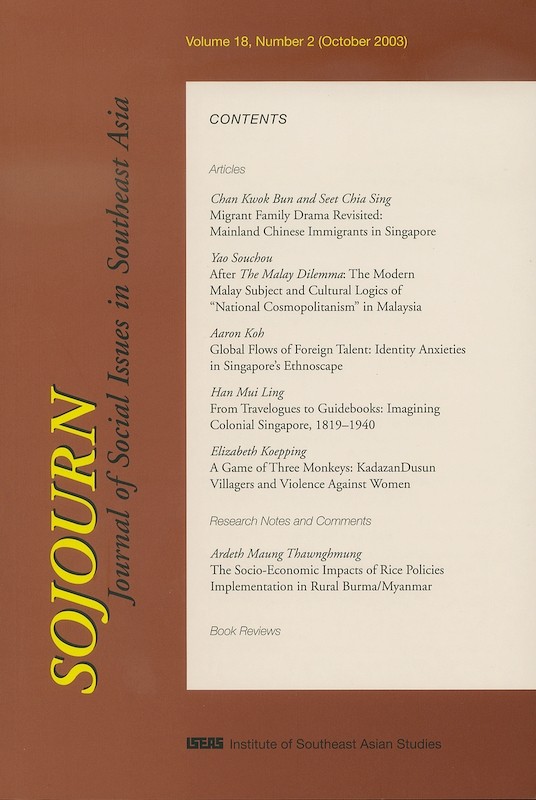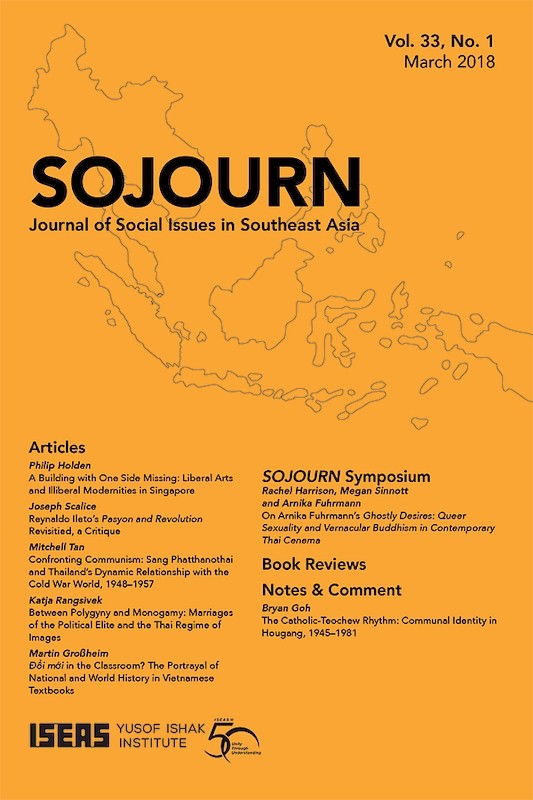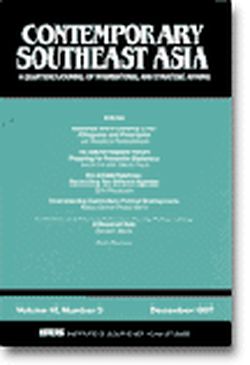SOJOURN: Journal of Social Issues in Southeast Asia Vol. 19/2 (Oct 2004)

Date of publication:
November 2004
Publisher:
Institute of Southeast Asian Studies
Number of pages:
176
Code:
SJ19/2
Contents
-
SOJOURN: Journal of Social Issues in Southeast Asia Vol. 19/2 (Oct 2004)
-
Preliminary pages
- ARTICLES
-
Nation, Transnation, Diaspora:Locating East Timorese Long-distance Nationalism, by Amanda Wise, author
-
The Thai Regime of Images, by Peter A Jackson, author see abstractThis study analyses the empirical character and logical form of modes of Thai power, which the author calls the Thai regime of images. The regime of images is an internally differentiated form of power that exerts systematically different types of policing and control over actions and discourse in the private and public spheres, respectively. Under this regime, actions performed and statements uttered in the public (satharana) domain are more stringently monitored than identical actions and utterances restricted to domains that may be no less visible but which are culturally labelled as private (suan tua). When statements or representations do not conform with idealized forms, and are perceived as disrupting, the image of smooth calm (phap-phot haeng khwam-sa-ngop-riap-roi), then both formal (legal) and informal (cultural) modes of power may be mobilized to expel the unwanted representations from the public domain. This regime of power/knowledge has epistemological implications, determining what can and cannot be articulated as public knowledge in Thailand.
-
The Performative State: Semi-coloniality and the Tyranny of Images in Modern Thailand, by Peter A Jackson, author see abstractPrevious accounts of the Thai regime of images have been largely ahistorical, presenting the phenomenon as something of a cultural given. This study traces the history of this regime of power/knowledge and power/prestige and shows that rather than being traditional it took its present form as part of Siams responses to the encroachment of the Western powers in the nineteenth century. As a modern form of power, the regime of images came into being as a product of the distinctive character of Siams semi-colonial relations with the West. Non-colonized Siam did not need to wage a war of independence to expel foreign colonizers. Nevertheless, to preserve national autonomy a new form of local power was called into being, and the regime of images emerges from this strategic mobilization of local power in the service of preserving Siamese independence.
-
Regional Development Programmes and the Life-dynamics of Tomohonese Women, by Victor T King, Ye-kyoum Kim, authors
- REVIEW ARTICLE
-
Rethinking Approaches to the Study of the Central Highlands of Vietnam: A Review of Oscar Saleminks The Ethnography of the Central Highlanders of Vietnam and Gerald Hickeys Window on a War, by Stan B H Tan, author
- BOOK REVIEWS
-
BOOK REVIEW: Chinese Minority in a Malay State: The Case of Terengganu in Malaysia. By Tan Chee-Beng, by Sharon Carstens, author
-
BOOK REVIEW: Kings, Country and Constitutions: Thailands Political Development 19322000. By Kobkua Suwannathat-Pian, by Bruce Lockhart, author
-
BOOK REVIEW: State, Society and Religious Engineering: Towards a Reformist Buddhism in Singapore. By Kuah-Pearce Khun Eng, by Piya Tan Beng Sin, author






